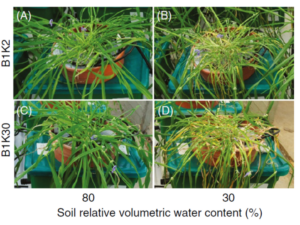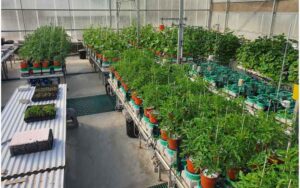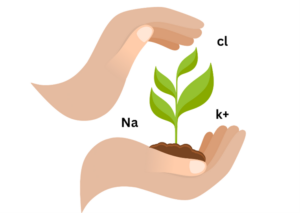How does water stress impact plant growth?
Water stress in plants refers to a condition where there is an inadequate amount of water available for the normal growth and development of plants. It occurs when the demand for water by the plant exceeds the available water supply in the soil. Water stress can have significant negative effects on plant health and productivity.
When plants experience water stress, they undergo a series of physiological and biochemical changes as a response to water deficiency. These changes are aimed at conserving water and maintaining basic metabolic functions. Some common responses to wter stress include:
- Stomatal closure: Stomata are tiny pores on the surface of leaves that regulate the exchange of gases and water vapor. When water is limited, plants close their stomata to reduce water loss through transpiration. However, this also restricts the uptake of carbon dioxide, which is essential for photosynthesis.
- Reduced photosynthesis: With stomatal closure, the availability of carbon dioxide for photosynthesis is limited. As a result, the rate of photosynthesis decreases, leading to reduced plant growth and lower yields.
- Wilting: In severe cases of water stress, plants may wilt as a result of a loss of turgor pressure. Wilting occurs when cells in the leaves and stems lose water, causing them to shrink and the plant to droop.
- Cellular damage: Prolonged water stress can lead to cellular damage and disruption of various physiological processes in plants. This can result in reduced nutrient uptake, impaired metabolism, and even cell death.
What are the causes of water stress in plants?
Water stress can be caused by various factors, including inadequate rainfall, drought conditions, high temperatures, poor soil water-holding capacity, and inefficient irrigation practices.
How does climate change influence water stress in plants?
Climate change is having profound effects on the Earth’s ecosystems, and one of the most significant impacts is the alteration of water availability and distribution patterns. The changes in temperature, precipitation, and extreme weather events associated with climate change have substantial implications for plant water stress.
Temperature increases resulting from climate change can directly affect plants’ water balance. Higher temperatures accelerate evaporation rates, leading to increased water loss through transpiration. This can result in higher levels of water stress for plants, particularly in regions already susceptible to arid conditions or droughts. Moreover, elevated temperatures can influence the timing of plant phenological events, such as flowering and leaf emergence, potentially disrupting plant growth cycles and exacerbating water stress.
Changes in precipitation patterns associated with climate change further contribute to water stress in plants. Some regions may experience more frequent and intense rainfall events, leading to increased runoff and reduced water infiltration. Consequently, plants may struggle to access water, especially in soils with limited water-holding capacity. Conversely, other regions may face more prolonged periods of drought, with decreased rainfall and extended dry spells. Such conditions can lead to severe water stress, affecting plant growth, development, and overall ecosystem dynamics.
Extreme weather events, including heatwaves and intense storms, are becoming more common as a result of climate change. These events can cause rapid fluctuations in water availability for plants. Heatwaves intensify evapotranspiration rates and can quickly deplete soil moisture, exposing plants to severe water stress. On the other hand, heavy rainfall associated with intense storms can lead to soil erosion, waterlogging, and decreased oxygen availability for plant roots, negatively impacting their ability to absorb water and nutrients.
How does climate change affect plant communities?
Climate change-induced shifts in plant communities are also influenced by water stress. Some plant species may be more resilient to water stress and better adapted to the changing climatic conditions, allowing them to outcompete other species. This can lead to shifts in species composition and distribution, with potential consequences for biodiversity and ecosystem functioning.
How can we address the challenges of climate change and water stress in plants?
Addressing the challenges posed by climate change and its impact on plant water stress requires a multi-faceted approach. Conservation and restoration of natural habitats can help preserve ecosystems and maintain their resilience to changing climatic conditions. Additionally, promoting sustainable water management practices, such as rainwater harvesting, efficient irrigation systems, and watershed management, can enhance water availability and minimize water stress for plants. Moreover, developing and implementing climate-smart agricultural practices, including crop diversification, improved water-use efficiency, and agroforestry systems, can contribute to the resilience of agricultural systems in the face of climate change.
Understanding the complex interactions between climate change and water stress in plants is crucial for guiding effective adaptation strategies. Ongoing research is needed to further investigate the physiological, biochemical, and genetic mechanisms that allow certain plant species to withstand water stress under changing climatic conditions.
Could plants adapt to water stress?
Plants have developed various adaptations to cope with water stress, allowing them to survive and thrive in environments with limited water availability. These adaptations occur at both physiological and morphological levels, enabling plants to conserve water and maintain their essential functions.
Physiological adaptations play a crucial role in helping plants withstand water stress. One key response is the regulation of stomatal conductance. Stomata are tiny openings on the surface of leaves that control the exchange of gases, including water vapor. During water stress, plants often reduce the opening size or number of stomata to limit water loss through transpiration. This adaptive response helps conserve water but can also restrict the intake of carbon dioxide needed for photosynthesis. Some plants have even evolved specialized mechanisms, such as crassulacean acid metabolism (CAM), where they open their stomata at night to capture carbon dioxide while minimizing water loss.
Plants also produce osmoprotectants or compatible solutes in response to water stress. These substances, such as proline and sugars, help maintain cell turgor and protect cellular structures from damage caused by dehydration. Osmoprotectants act as osmolytes, regulating water potential and preventing water loss from cells. Additionally, they stabilize proteins and cellular membranes, allowing plants to function under water stress conditions.
At the morphological level, plants exhibit several adaptations to cope with water stress. For instance, some plants have developed extensive root systems that can explore larger soil volumes, allowing them to access water from deeper soil layers. These deep-rooted plants are often better equipped to survive periods of drought or limited rainfall. Other plants have developed specialized root structures, such as root hairs, which increase the surface area for water absorption. These adaptations enhance the plant’s ability to capture available water and maximize water uptake efficiency.
In addition to root adaptations, plants may exhibit leaf modifications. Xerophytes, which are plants adapted to arid environments, often have smaller and thicker leaves. This morphology reduces the surface area available for water loss through transpiration and decreases the diffusion gradient for water vapor. The reduced leaf size also helps to minimize light absorption, reducing the potential for overheating under water-limited conditions.
Furthermore, some plants can shed leaves or enter a dormant state during water stress. Deciduous trees, for example, drop their leaves in response to drought or low water availability. This shedding conserves water and energy, allowing the plant to allocate resources towards essential functions and survival.
Understanding the various physiological and morphological adaptations that plants employ to cope with water stress is essential for developing strategies to mitigate its negative effects. Researchers and plant breeders can study these adaptations to identify key genes and traits associated with drought tolerance. This knowledge can then be applied in crop breeding programs to develop drought-resistant varieties and improve water-use efficiency in agriculture.
How the industry deals with water deficit in plants?
Effective irrigation management is crucial for optimizing water use in agriculture and minimizing the negative impacts of water stress on crop production. Various strategies and techniques have been developed to enhance water-use efficiency and reduce water stress in agricultural systems.
One important approach to efficient irrigation management is the use of precision irrigation techniques. These techniques aim to deliver water precisely to the root zone of plants, ensuring that water is applied where and when it is needed most. Precision irrigation systems, such as drip irrigation and micro-sprinklers, minimize water losses through evaporation and runoff, as water is directly targeted at the plant’s root zone. This approach not only saves water but also reduces energy consumption and improves crop yield and quality.
Another strategy is deficit irrigation, which involves intentionally applying less water than the crop’s full water requirements. By carefully managing the timing and amount of water supplied, deficit irrigation can induce controlled water stress during specific growth stages, without significantly compromising crop yield. This approach requires a thorough understanding of crop water requirements and the specific sensitivity of different crops to water stress. Deficit irrigation can stimulate adaptive responses in plants, such as root growth, osmotic adjustment, and improved water-use efficiency, thus enhancing the crop’s ability to cope with limited water availability.
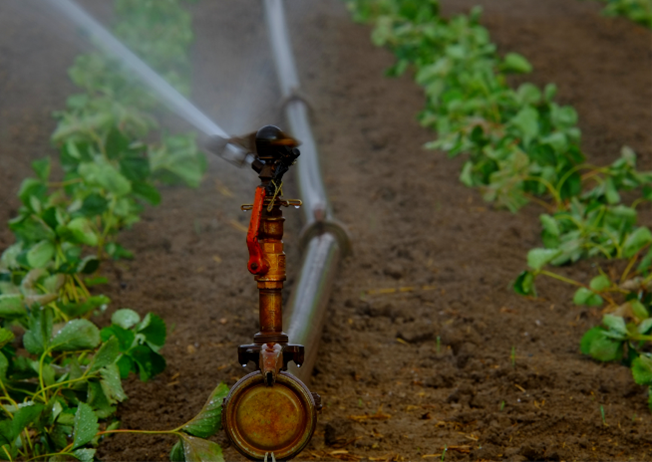
Crop rotation and diversification can also contribute to efficient irrigation management and water stress mitigation. Growing a diverse range of crops in a rotation system helps break pest and disease cycles, improve soil health, and reduce the risk of water stress. Different crops have varying water requirements and root structures, which can help optimize water use and minimize the overall demand for irrigation water. For example, combining deep-rooted crops with shallow-rooted crops can optimize water extraction from different soil depths and reduce competition for water resources.
Furthermore, improving on-farm water management practices is vital for efficient irrigation. Implementing proper water scheduling, based on accurate monitoring of soil moisture levels and weather conditions, helps ensure that irrigation is timed appropriately to meet the crop’s needs. Regular maintenance and calibration of irrigation systems are essential to minimize water losses due to leaks, clogs, or inefficient water distribution. Additionally, adopting new technologies such as the PlantArray system which soil sensors, automated irrigation controllers, and remote sensing tools, can provide real-time data and optimize irrigation decision-making.
How the PlantArray system help to understanding the response of the plant to water stress?
This innovative system utilizes state-of-the-art technologies and sensors to monitor and quantify various plant physiological parameters, providing valuable insights into the water status of plants.
The PlantArray system employs non-destructive and non-invasive techniques, allowing for continuous monitoring of plants throughout their growth stages, while controlling different water levels.
It measures key physiological indicators and by analyzing these parameters, the PlantArray system can accurately assess water stress levels in plants. Changes in stomatal conductance and transpiration rates, for example, provide indications of plant water uptake and loss.
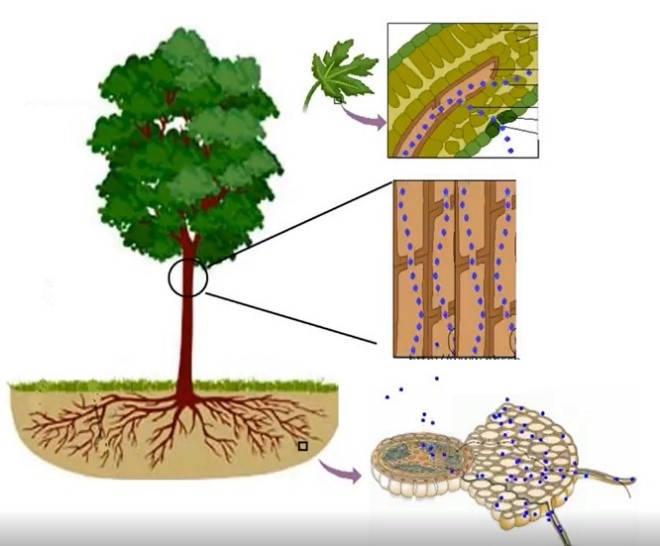
How does real-time monitoring with the PlantArray system benefit plant management?
The real-time monitoring capability of the PlantArray system enables early detection of water stress, facilitating proactive management strategies. By utilizing our PlantArray system in their research, Researchers, breeders, and agronomists can optimize this information to better irrigation practices, develop drought-tolerant crop varieties, and implement efficient water management techniques.
It’s time to leave your restrictive manual devices and get your own PlantArray system.
Still undecided? Plant Ditech here for you! Click on the contact tab on the side of the page and we will get back to you as soon as possible.


